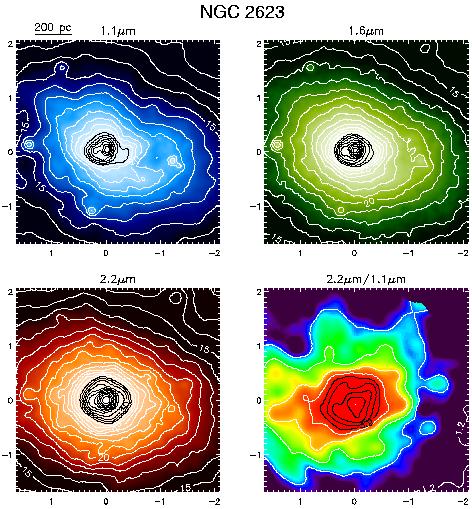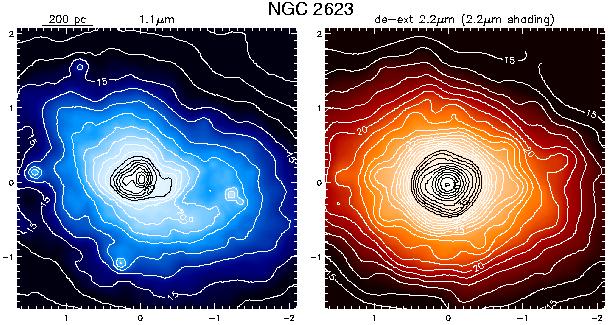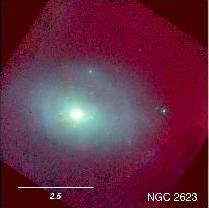


NGC 2623 has a highly reddened nucleus with a
possible short tidal
feature or spiral arm at ~ 1" radius to the SW (seen best in
the 1.1 µm image). In the optical, prominent tails are seen
suggesting
that this system underwent a significant merging event in the past
(Toomre 1977, Joseph & Wright 1985).
However, at 1.6 and 2.2 µm, the light profiles are smooth,
following
approximately an r1/4 law (Wright et al. 1990). The latter
morphology suggests that the galaxies which may have merged have coalesced
into a common nucleus. A weak VLBI radio core is seen in the nucleus of
NGC 2623 (cf. Lonsdale, Smith & Lonsdale 1993). In
CO(1-0) the emission complex is ~
1.6" in diameter with kinematic major axis E-W (Bryant & Scoville 1999).
Shaded contour plots of the extinction corrected
2.2 µm emission are shown together with the 1.1
µm (upper left)
observed emission. In both panels, the contours and shading are
logarithmic with the contours spaced by factors 21/2. (The level
values are the same as for the figure above). The arcsec displacements
in RA and DEC, given along the borders are measured from the 2.2
µm in
all frames. At the upper left, a length bar is drawn. For the ratio image,
both the 2.2 and 1.1 µm images were smoothed with the same adaptive
smoothing and then smoothed with a Gaussian FWHM = 0.2" in
calculating the 2.2 µm opacity from Eq. 3 (see text). In
cases where a
strong point-source or variable background contaminated the 2.2 µm
image, the extinction corrected image was derived for 1.6
µm. For the
galaxies with strong point-sources, the PSF was fit to the source and then
subtracted and replaced by a Gaussian with the proper integrated flux (see
text - NGC 7469, IRAS 08572+3915, IRAS 05189-2524, PKS 1345+12, IRAS 07598+6508, Mrk 1014 and 3C48).


